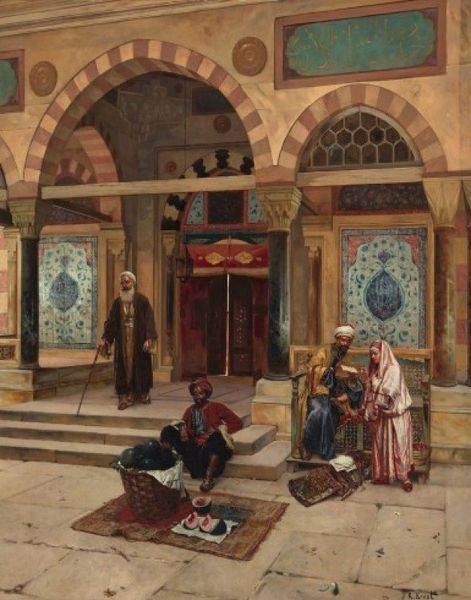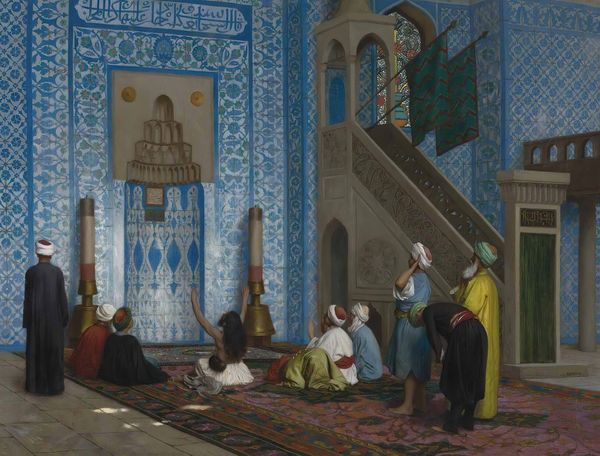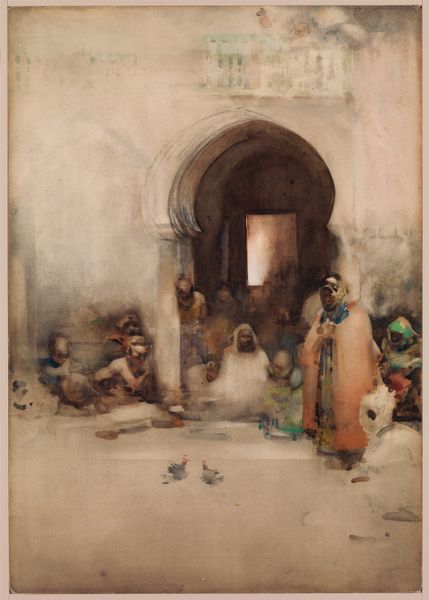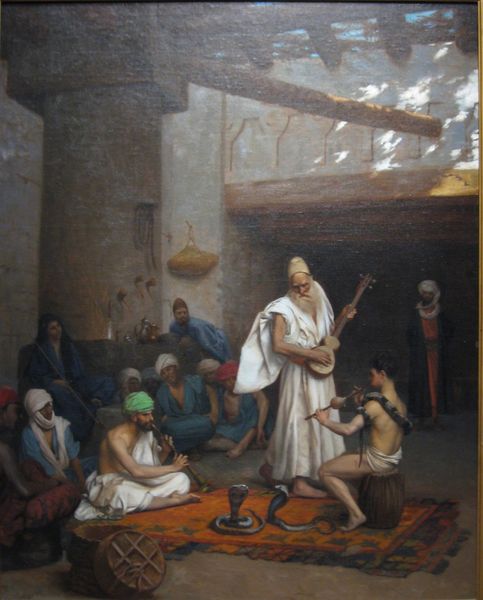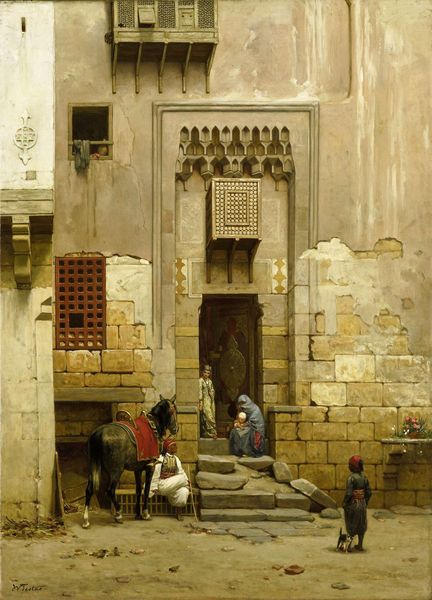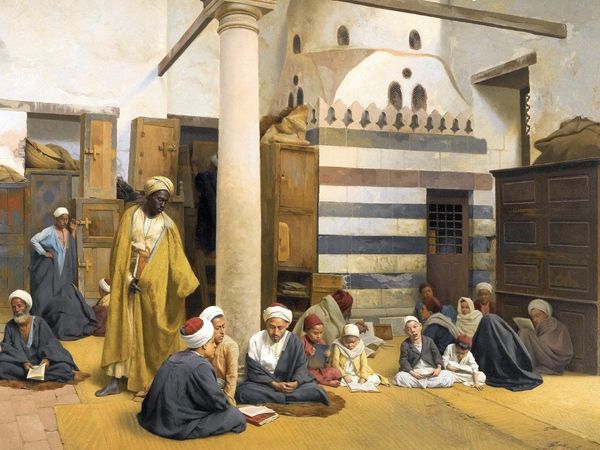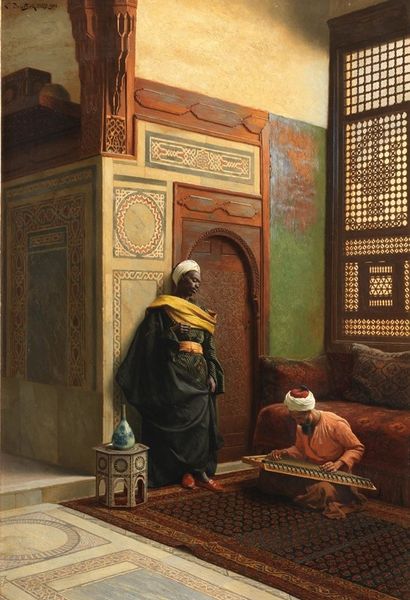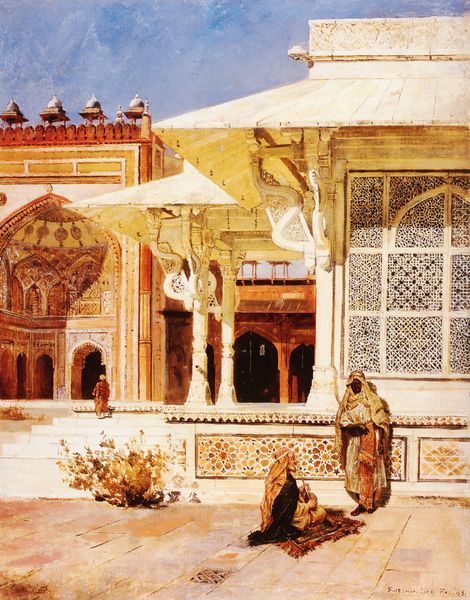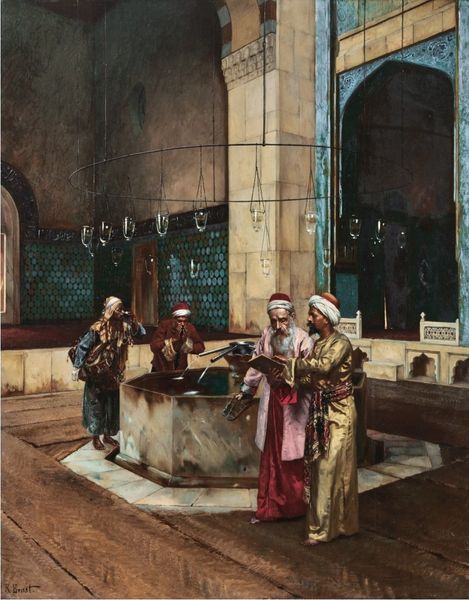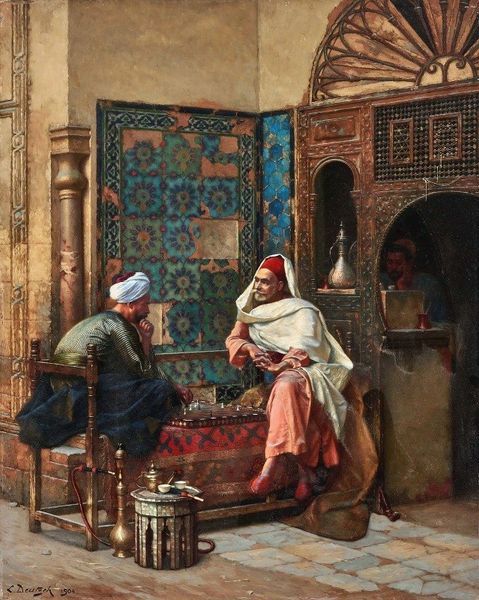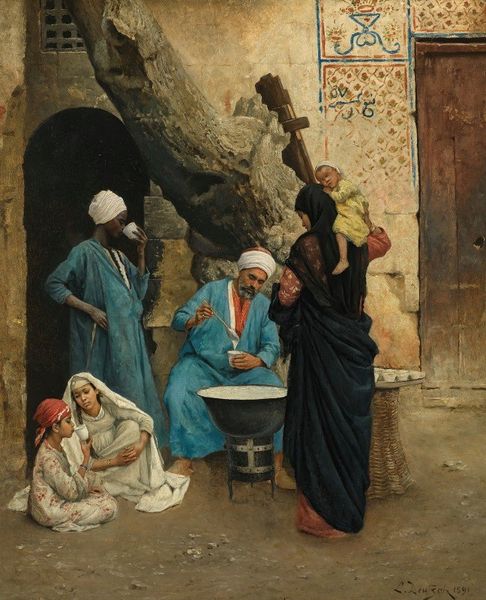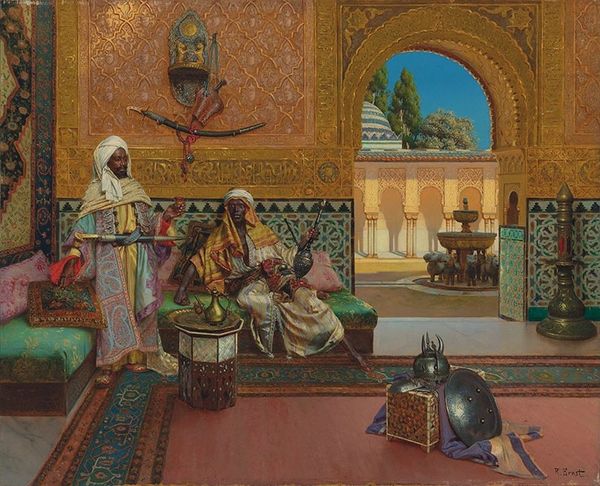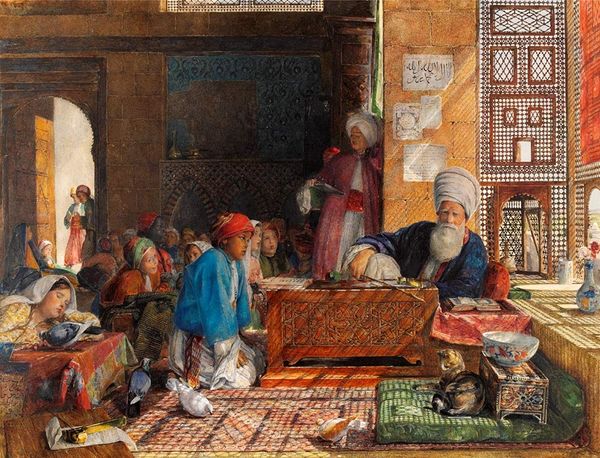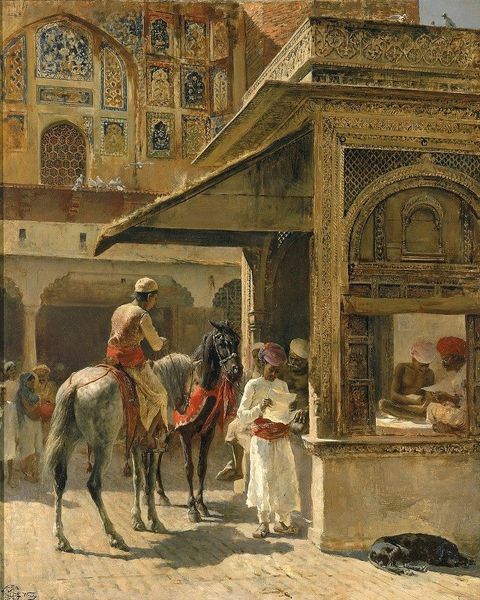
painting, oil-paint
#
narrative-art
#
painting
#
oil-paint
#
oil painting
#
islamic-art
#
genre-painting
#
academic-art
Copyright: Public Domain: Artvee
Editor: So this is Rudolf Ernst's "In the Madrasa," an oil painting. It seems to depict a traditional Islamic school. It's beautifully rendered, almost photographically so, but the scene feels very…staged. How do you interpret this work? Curator: That feeling of being "staged" is crucial. Ernst, like many Orientalist painters, never actually visited the places he depicted. He reconstructed them from photographs and imagination. This raises critical questions about representation, power dynamics, and cultural appropriation. Editor: Appropriation? How so? Curator: Think about it: a European artist profiting from images of a culture he doesn't fully understand. The Madrasa, a place of learning and religious significance, is reduced to an exotic tableau for Western consumption. Notice the detail he lavishes on the architecture versus the relative anonymity of the figures. What does that emphasis suggest? Editor: That the artist is more interested in the *place* than the people, maybe? Almost like they’re part of the decor. Curator: Precisely. This relates to colonial narratives, where the East is often presented as static, timeless, and available for Western viewing—and, by extension, control. How might contemporary Islamic artists respond to this type of portrayal, do you think? Editor: Maybe by reclaiming their own narrative, depicting everyday life and spirituality from an insider's perspective? Curator: Exactly. Understanding this historical context allows us to critically examine how art can perpetuate or challenge stereotypes. Ernst’s work isn't just a pretty picture; it's a historical document reflecting a complex and often problematic relationship between the West and the East. Editor: I hadn't considered the power dynamics at play so explicitly. I guess there is a lot more to it than the aesthetic surface. Curator: Always. It is essential that art history students recognize the nuanced layers that shape any work of art, and approach the object with critical analysis.
Comments
No comments
Be the first to comment and join the conversation on the ultimate creative platform.
